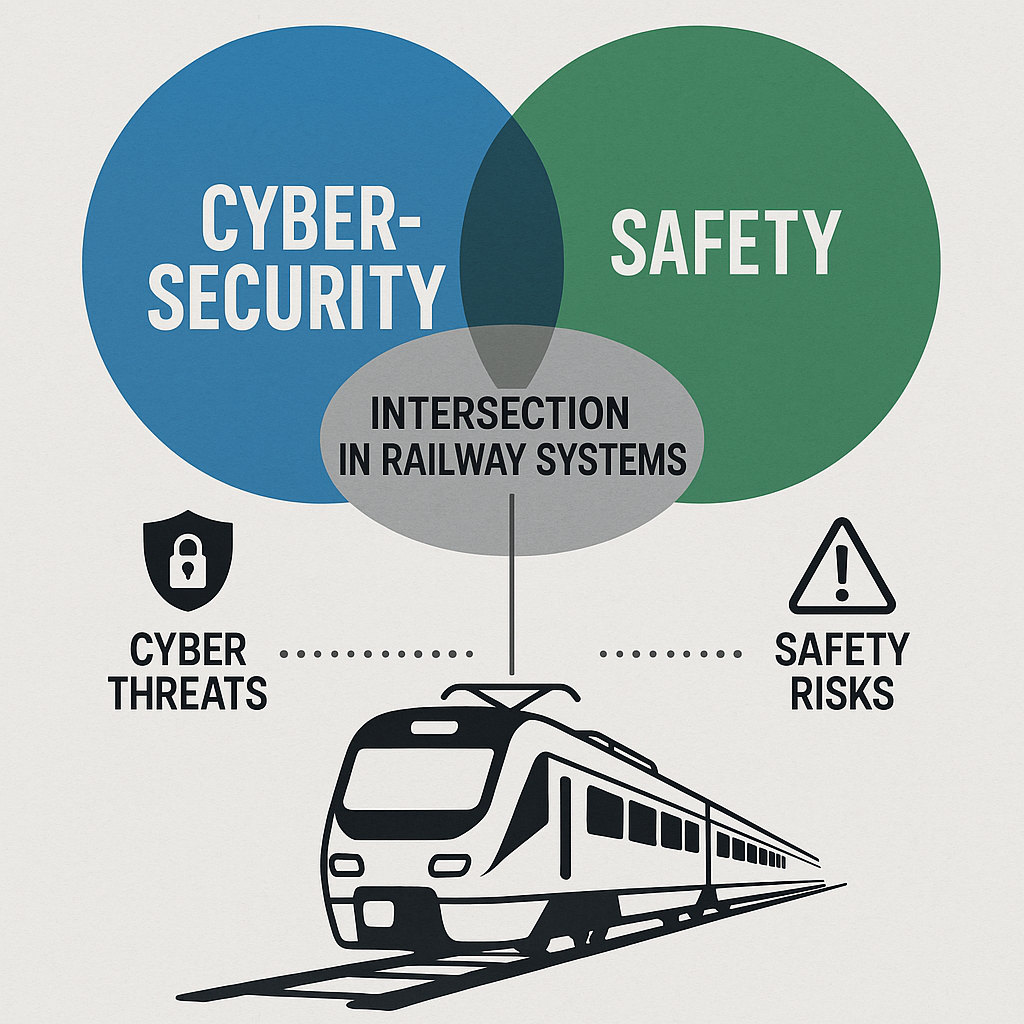🚆 Introduction: Two Worlds Colliding?
In the railway domain, Safety Assurance and Cybersecurity have traditionally evolved as separate disciplines—one focused on preventing accidents and hazards, the other on deterring malicious threats and data breaches. But as rail systems become more digitally interconnected, these two fields are now on a collision course—demanding integrated thinking and collaborative solutions.
This blog explores how and why cybersecurity is becoming a critical dimension of railway safety assurance, and what it means for RAMS engineers, operators, and suppliers.
🛡️ Safety Assurance in Rail: A Quick Recap
Safety assurance in rail systems follows standards like EN 50126, EN 50128, and EN 50129, which focus on:
- Systematic hazard identification and risk assessment
- Lifecycle-based validation and verification
- Achieving Safety Integrity Levels (SIL)
- Ensuring safe failure modes and fail-safe system behavior
The assumption? That failures are random or systematic, but not malicious.
🔐 Enter Cybersecurity: A New Type of Threat
Modern rail systems rely heavily on:
- ETCS and CBTC signalling
- SCADA networks
- IoT-based sensors
- Wireless and IP-based communication protocols
These introduce attack surfaces that can be exploited by external actors. Cyber incidents, such as unauthorized access to signaling, manipulation of control commands, or ransomware attacks on traffic management systems, pose direct safety threats.
Cyber threats are intentional, intelligent, and evolving—unlike traditional safety failures.
⚠️ Where Cybersecurity and Safety Intersect
The key intersection points include:
1. Safety-Critical Function Exposure
If a cyberattack disables or manipulates safety-critical functions (e.g., train detection, braking logic), the system may no longer behave safely.
2. Shared Components
The same software/hardware elements may be subject to both safety and security constraints. For example:
- A safety-certified PLC might be vulnerable to a remote exploit.
- A secure VPN configuration might cause delays, impacting safety margins.
3. Risk Propagation
A breach in a non-safety-critical system (e.g., passenger Wi-Fi) could propagate to safety domains if not properly isolated.
🧩 Challenges in Integrating Both
- Different methodologies: Safety uses probabilistic risk (e.g., failure rates), while cybersecurity uses threat modeling and adversarial thinking.
- Regulatory gaps: Safety standards are well-established, but cybersecurity is newer in rail (e.g., TS 50701 is still maturing).
- Organizational silos: Safety and IT teams often operate separately, which slows integration.
📘 EN 50701: Bridging the Gap
The introduction of CENELEC TS 50701 (Railway applications – Cybersecurity) brings a structured approach, aligned with EN 50126:
- Asset identification and risk assessment
- Zoning and security levels
- Requirements traceability and V&V
- Interface to existing safety processes
This technical specification offers a framework for harmonizing cybersecurity within RAMS processes.
💡 Implications for RAMS Engineers
As a RAMS professional, understanding the cross-domain impact is now part of your job:
- Safety cases must consider cyber-induced failures.
- Threat analysis should feed into hazard logs.
- Assurance activities should validate both integrity and resilience.
- You may need to collaborate with IT/cybersecurity teams, or even learn basic cyber threat modeling techniques.
🛠️ Best Practices for Integrating Cyber & Safety
- Involve security experts early in the system lifecycle.
- Conduct joint hazard/threat workshops to identify overlapping risks.
- Implement defense-in-depth with redundancy, segmentation, and monitoring.
- Ensure your RAMS documentation accounts for cyber-vulnerable pathways.
- Use realistic attack scenarios during validation/testing phases.

🚦 Conclusion
In the world of modern railways, safety without cybersecurity is no longer sufficient. As RAMS engineers and system designers, it’s our responsibility to build systems that are both safe and secure by design. The integration is not just technical—it’s cultural, procedural, and strategic.
Cybersecurity and safety assurance are no longer separate tracks. They must run in parallel, synchronized, for the train to reach its destination.
To learn more about railway safety and engineering, explore our RAMS training courses at https://ramsrail.com/rams-courses/.
